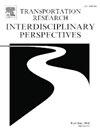Rethinking Advanced Driver Assistance System taxonomies: A framework and inventory of real-world safety performance
IF 3.9
Q2 TRANSPORTATION
Transportation Research Interdisciplinary Perspectives
Pub Date : 2025-01-01
DOI:10.1016/j.trip.2025.101336
引用次数: 0
Abstract
In this review, we assess the real-world effectiveness of ADAS! (ADAS!) in preventing vehicle crashes. We propose a new, data-driven framework of safety performance based on dimensions urgency and level of control as an alternative to existing taxonomies.
We identified 28 ADAS! and collected data on (real-world) safety performance of from grey (technical reports) and white (scientific) literature. ADAS! were categorized by functional class (longitudinal/lateral control, monitoring, information systems) and by interaction type (informing, warning, intervening, comfort-enhancing).
The data analysis showed that LKA! (LKA!) (−19.1%) and DMS! (DMS!) (−14%) had the strongest crash rate reduction effects, followed by AEB! (AEB!) (−10.7%). However, systems like ACC! (ACC!) and CC! (CC!) were associated with increased crash rates (+8%, +12%). Categorizing systems by either functional class or interaction type revealed central tendencies favoring safety of longitudinal control and intervening systems, while comfort-enhancing systems showed detrimental effects.
From the categorizations, we derived dimensions urgency and level of control, scoring individual ADAS! accordingly. A linear model based on these dimensions (pseudo-) explained a similar amount of variance as the categorizations (functional class: 0.140, interaction type: 0.087). The analysis indicated that low urgency and high level of control, typical of comfort-enhancing systems, did not improve safety.
Our findings support the positive safety effects of ADAS!, but also point to risks, particularly for comfort-enhancing technologies. The proposed framework offers an explanation for the observations. It is simple and generalizable, and avoids disadvantages inherent to categorical classifications, making it a potentially valuable tool for designers and policymakers.
求助全文
约1分钟内获得全文
求助全文
来源期刊

Transportation Research Interdisciplinary Perspectives
Engineering-Automotive Engineering
CiteScore
12.90
自引率
0.00%
发文量
185
审稿时长
22 weeks
 求助内容:
求助内容: 应助结果提醒方式:
应助结果提醒方式:


